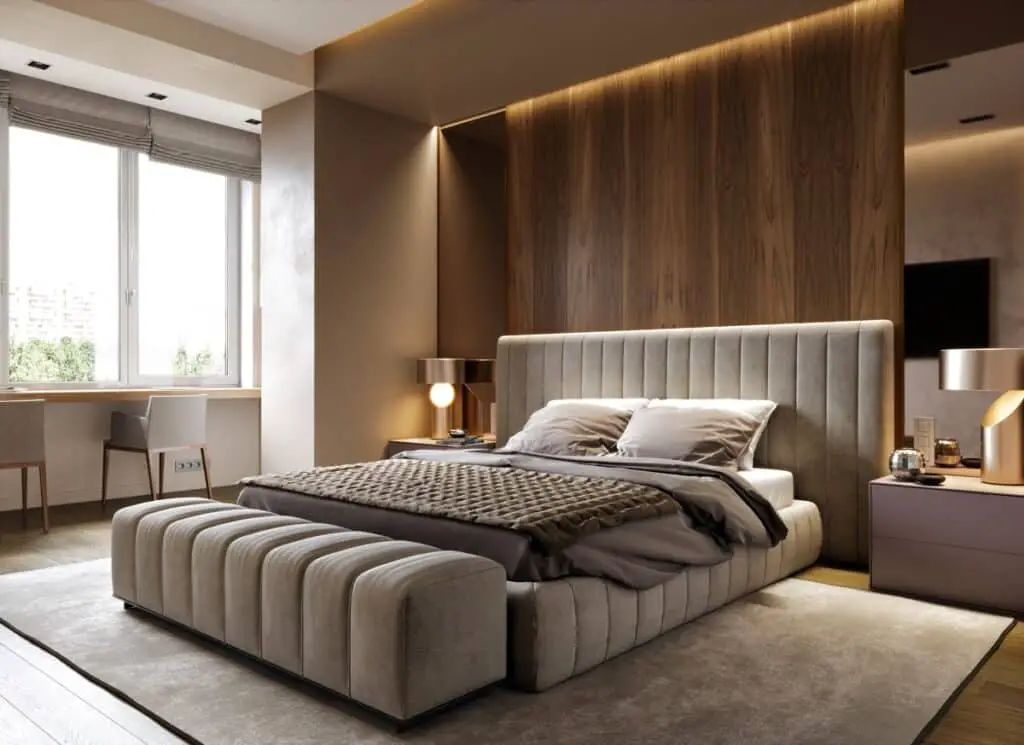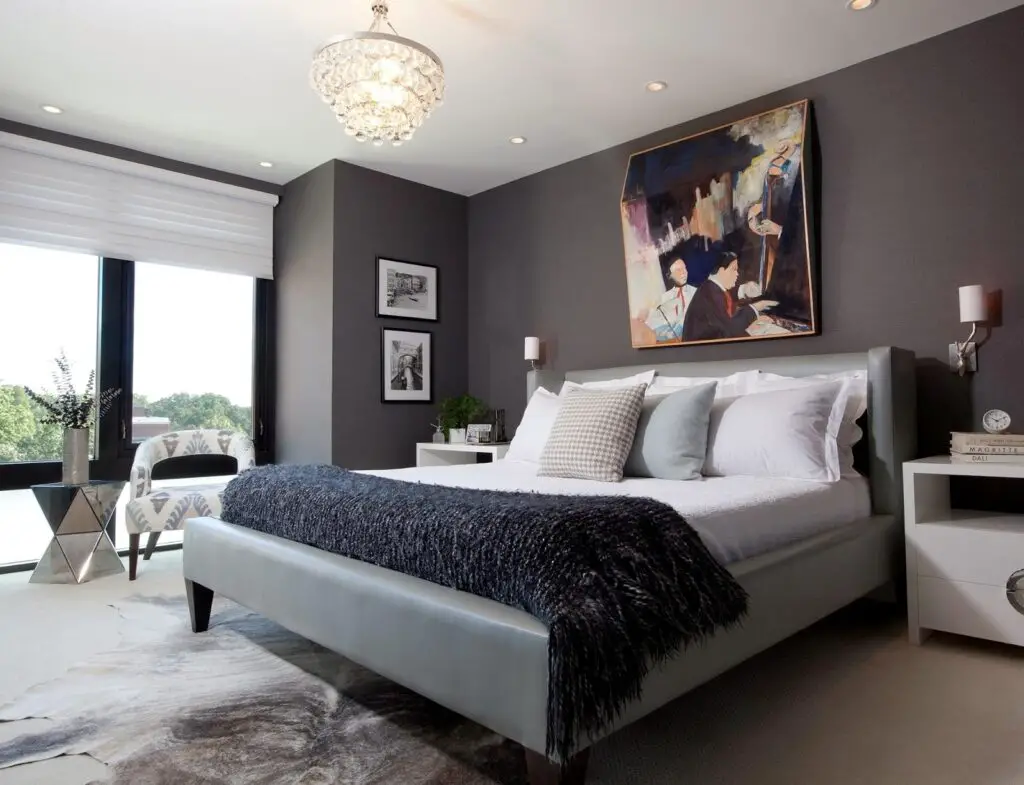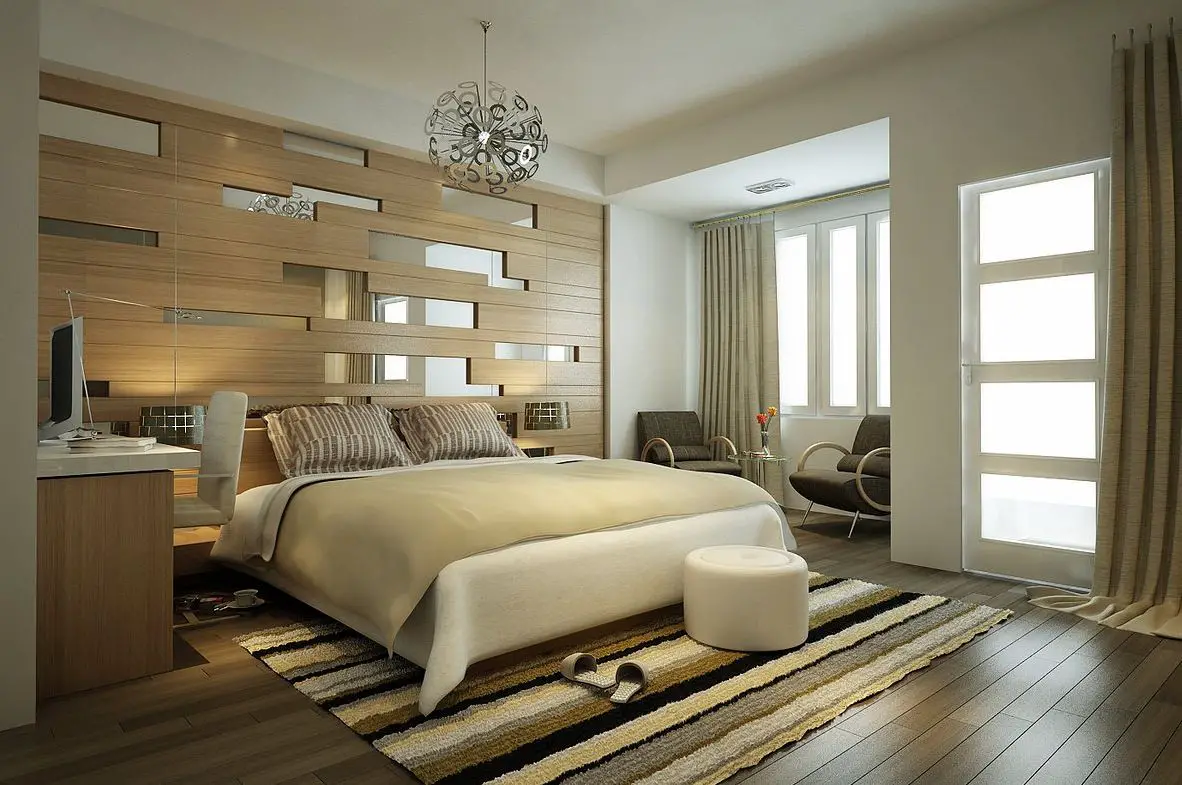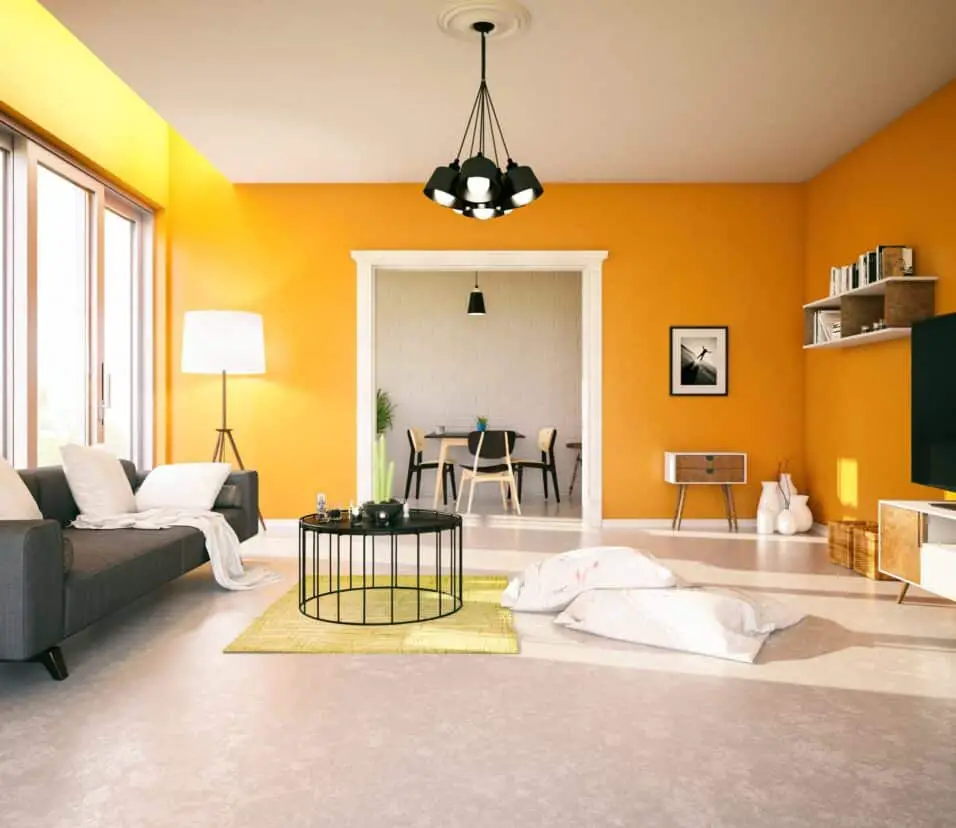How To Design A Bedroom Layout
Introduction
How To Design A Bedroom Layout: Designing a bedroom layout is an artful endeavor that transcends mere aesthetics; it’s about creating a personal sanctuary where comfort and functionality coexist harmoniously. Your bedroom is not just a place to rest your head; it’s a canvas upon which you can express your individuality and cater to your specific needs. Whether you’re starting from scratch in a new space or contemplating a refreshing makeover of your current bedroom, the layout is the foundational element that can make or break the overall ambiance.
A well-designed bedroom layout is like a well-composed symphony, with each element playing its part in creating a soothing and practical environment. From the placement of your bed to the arrangement of furniture, lighting, and storage solutions, every decision contributes to the overall harmony of the room. It’s not merely about following a set of rules; it’s about crafting a space that resonates with your personality, habits, and daily routines.
In this guide, we will embark on a journey through the intricacies of arrange bedroom layout design. Whether you’re seeking to maximize a small space, create a luxurious retreat, or strike a balance between aesthetics and functionality, this comprehensive exploration will equip you with the knowledge and inspiration needed to transform your bedroom into a haven of comfort and style. So, let’s dive into the art and science of designing a bedroom layout that reflects your unique taste and fosters tranquility in your personal space.

How do I plan my bedroom layout?
Bedroom layout ideas
- Make the bed the focal point.
- Position the bed alongside the doorway.
- Allow space for an en-suite.
- Enjoy a room with a view.
- View a window side-on.
- Choose a bright spot for a dressing table.
- Utilise bedroom alcoves for storage.
- Bridge the gap above a bed.
Planning your bedroom layout is a crucial step in creating a comfortable and functional space. Start by measuring your room and noting the locations of doors, windows, and any architectural features. Consider the placement of essential furniture like the bed, nightstands, and dressers. Think about the flow of the room and how you’ll move around it.
Next, consider your lifestyle and needs. Do you need space for a home office or a reading nook? Factor in storage solutions to keep the room organized. Create zones within the bedroom for different activities, like sleeping, dressing, and relaxing. Experiment with different layouts on paper or using design software to find the one that works best for you.
Don’t forget about aesthetics. Choose a color scheme and decor that reflects your style and promotes a calming atmosphere. Consider the placement of lighting fixtures to create a warm and inviting ambiance. Finally, don’t be afraid to experiment and make adjustments as you live in the space – sometimes, you may discover a better layout through trial and error.
Can I put a bed in front of a window?
According to Sarah Barnard of Sarah Barnard Designs, “placing a bed in front of the window works well in situations where other locations can create conflicts, like blocking doorways or furnishings or creating an odd or uncomfortable space division.
Yes, you can place a bed in front of a window, and it can actually be a visually striking design choice when done correctly. Here are a few tips to consider:
- Bed Size: Opt for a bed that complements the window’s size. A smaller window may work well with a twin or full-sized bed, while a larger window can accommodate a queen or king-sized bed.
- Headboard: Use a headboard that’s proportionate to the window and visually frames it. This can create a focal point and make the bed placement intentional.
- Window Treatments: Choose window treatments that allow for privacy when needed, such as curtains or blinds. You can also use sheer curtains to let in natural light while maintaining privacy.
- Layout: Ensure there is enough space around the bed for easy movement. Nightstands or other bedroom furniture can be placed on either side of the bed for functionality.
- Aesthetics: Consider the overall aesthetics of the room. Ensure that the bed arrangement enhances the room’s style and doesn’t obstruct the view if it’s desirable.
Remember that interior design is about personal preference. Placing a bed in front of a window can work beautifully if it aligns with your vision for the room and enhances its overall appeal.
How can I stylish my bedroom?
But before you even think of shopping to upgrade your bedroom, consider these helpful pointers to make your space as luxurious as it can be.
- Incorporate a rug.
- Display art.
- Overfill your throw pillows.
- Add a hanging light fixture.
- Rethink your nightstand.
- Focus on the statement pieces.
- Keep the floor empty.
Styling your bedroom is a creative process that allows you to infuse your personality into the space.
Here are some steps to help you style your bedroom:
- Define Your Style: Determine the style you want for your bedroom. Whether it’s modern, rustic, bohemian, or minimalist, having a clear style in mind will guide your decor choices.
- Color Scheme: Choose a color palette that resonates with you and promotes relaxation. Neutral tones like whites, grays, and soft pastels are often popular for bedrooms, but feel free to add pops of color through accents.
- Furniture: Select furniture that complements your style and fits the room’s layout. Consider pieces like a comfortable bed, nightstands, a dresser, and seating if space allows.
- Bedding: Invest in quality bedding that’s both comfortable and aesthetically pleasing. Layer pillows, throws, and cushions for added texture and style.
- Art and Decor: Hang art that speaks to you and complements your style. Decorate with items like mirrors, plants, rugs, and decorative accessories that enhance the room’s ambiance.
- Lighting: Incorporate a mix of ambient, task, and accent lighting. Consider bedside lamps, pendant lights, or wall sconces to create different lighting moods.
- Personal Touch: Add personal touches like family photos, mementos, or artwork you’ve created. These items make the space uniquely yours.
- Organization: Use storage solutions like closets, dressers, and under-bed storage to keep clutter at bay.
Remember that your bedroom should be a reflection of your personality and a place of comfort and relaxation. Take your time, and enjoy the process of creating a space that you’ll love.
How do I learn to design a room?
How to Design a Room You Love (When You’re Not a Trained Designer!)
- Step 1 – Analyze Your Current Space.
- Step 2 – Find Inspiration.
- Step 3 – Determine a Color Palette.
- Step 4 – Create a Design Plan.
- Step 5 – Gather Design Elements.
- Step 6 – Start Decorating!
- Step 7 – Finishing the Room.
Learning to design a room is an exciting journey that can be both enjoyable and rewarding.
Here’s a roadmap to get you started:
- Research and Inspiration: Begin by researching various interior design styles and gathering inspiration. Magazines, websites, and social media platforms like Pinterest and Instagram are excellent sources of design ideas.
- Educational Resources: Consider enrolling in interior design courses or programs at a local college or online. There are also many free resources, including blogs, YouTube channels, and design books, that can teach you the fundamentals of design.
- Hands-On Experience: Practice is essential. Start by redesigning your own space or helping friends and family with their design projects. This hands-on experience will help you apply what you’ve learned.
- Software Tools: Familiarize yourself with design software like SketchUp, AutoCAD, or interior design-specific software to create floor plans and 3D models.
- Networking: Connect with professionals in the field. Attend industry events, join online forums, and seek mentorship to gain insights and advice from experienced designers.
- Stay Current: Interior design is an ever-evolving field. Stay updated on the latest trends, materials, and technologies by reading industry publications and attending design exhibitions.
- Certification: Consider pursuing certification in interior design if you’re looking to turn your passion into a career. Certification can provide credibility and open up opportunities in the industry.
- Portfolio Development: As you gain experience, build a portfolio showcasing your design projects. A well-curated portfolio is crucial for attracting clients or employers.
- Client Projects: Once you’re confident in your abilities, take on client projects to gain practical experience and build your reputation in the industry.
- Continuous Learning: Interior design is a field where you never stop learning. Keep exploring new ideas, materials, and techniques to refine your skills and stay innovative.
Remember that everyone’s design journey is unique. It’s a field that allows for creativity and individuality, so trust your instincts and let your passion for design guide you.
What is the best direction for your bed to face?
South
Up-to-Date
South is considered the best direction to sleep, according to ancient vastu shastra tradition and observations of nature. When your head is towards the south it aligns with the earth’s electromagnetic field. One early scientific study indicated that sleeping toward the south may improve sleep.
The best direction for your bed to face can vary depending on personal preferences, cultural beliefs, and the principles of feng shui.
Here are some common orientations and their associated benefits:
- North: Some believe that aligning your bed with the north direction enhances sleep quality and overall well-being. It is thought to promote better rest and improved health. However, this is a matter of personal belief and may not be grounded in scientific evidence.
- East: In feng shui, east is associated with new beginnings and growth. Placing your bed in the east may promote a sense of renewal and vitality. It’s also believed to be conducive to meditation and spiritual practices, as the rising sun symbolizes new opportunities.
- South: The south is often considered a favorable direction for the bedroom as it is associated with warmth and energy. Sleeping with your head facing south is thought to bring positive energy and a sense of security. However, it’s essential to consider other factors, such as room layout and comfort.
- West: West is associated with the end of the day and relaxation. Placing your bed in the west may create a calming atmosphere, ideal for unwinding after a long day. It’s a popular choice for bedrooms but should be adapted to your room’s layout.
Ultimately, the best direction for your bed to face should align with your comfort and preferences. While some people find value in the principles of feng shui, others prioritize practicality and aesthetics. Consider the layout of your bedroom, the position of windows and doors, and how different orientations affect your comfort and sleep quality when making your decision.
Should I put bed against wall?
Where should the bed be positioned in relation to openings and walls? The ideal position of the bed is therefore with the headboard against the wall, not facing the door or window. This is because a negative feeling of lack of privacy and a limited sense of protection and seclusion should not be accentuated.
Placing the bed against a wall is a common and practical arrangement in many bedrooms. Here are some considerations for and against this placement:
Advantages:
- Space Saving: Placing the bed against a wall can free up space in the rest of the room, making it feel more open and spacious.
- Cozy Feel: It can create a cozy and secure feeling, almost like a nook, which some people find comforting for sleep.
- Easy Access: It’s easier to access the bed when it’s against the wall, especially if you have limited space in your room.
Considerations:
- Aesthetics: Depending on the room’s layout, placing the bed against a wall may not be aesthetically pleasing. It might disrupt the flow of the room or make it appear unbalanced.
- Access: If you share the bed, having it against a wall might require one person to climb over the other to get in and out of bed, which can be inconvenient.
- Airflow: Depending on the room’s ventilation and temperature control, having one side of the bed against a wall might affect airflow and comfort.
Ultimately, whether or not to place your bed against a wall depends on your room’s layout, your personal preferences, and how you prioritize factors like aesthetics, space-saving, and ease of access. Experiment with different arrangements to see what works best for your comfort and the overall design of your bedroom.
Which direction should you sleep?
Head Position: It is generally recommended that the head of the bed should be placed towards the south or east direction. Sleeping with the head towards the south is believed to promote relaxation and sound sleep, while the east direction is associated with positive energy and good health.
The direction in which you sleep is a matter of personal preference and cultural beliefs rather than a universally established rule. Here are some considerations:
- Personal Comfort: The most important factor is your personal comfort. Your bed should be oriented in a way that allows you to sleep well, wake up refreshed, and feel comfortable in your sleeping position.
- Room Layout: The layout of your bedroom can significantly influence the direction in which your bed faces. Consider the placement of windows, doors, and other furniture when deciding on the orientation.
- Cultural Beliefs: In some cultures, there are traditional beliefs about the direction in which you should sleep. For example, in feng shui, there are recommendations based on the individual’s birth element. However, these beliefs are not universally applicable and should be considered with personal comfort in mind.
- Health Considerations: Some people find specific orientations more comfortable due to health conditions or personal preferences. For example, those with sleep apnea may benefit from elevating the head of the bed, regardless of its orientation.
Ultimately, there is no one-size-fits-all answer to which direction you should sleep in. The most important factor is your comfort and how well you sleep in your chosen orientation. Experiment with different setups to find what works best for you.
Which corner is best for bed?
Bed Direction As Per Vastu – Bedroom Vastu for Couples
The bed should always be on the southwest wall of the room. It should not face the door. The best sleeping position for couples as per Vastu is to keep the head towards the south, southeast, or southwest.
The choice of which corner to place your bed largely depends on your room’s layout, personal preferences, and any cultural or design considerations. Here are some common options:
- Diagonal Corner: Placing the bed in a diagonal corner of the room can create a visually interesting and dynamic layout. It can also make the room feel more spacious by maximizing the use of space.
- Opposite Corner: Placing the bed in the corner opposite the entrance to the room can create a balanced and symmetrical look. It can also provide a clear view of the entire room when lying in bed.
- Adjacent Corner: Placing the bed in an adjacent corner can create a cozy and tucked-away feel. It can be an excellent choice for creating a private and intimate sleeping space.
- Center of the Room: In some larger bedrooms, placing the bed in the center of the room can be a dramatic and stylish choice. However, it might not be practical in smaller spaces.
- Against the Wall: Placing the bed against one of the walls, as discussed earlier, is a common and practical choice that can save space and create a cozy feel.
Ultimately, the best corner for your bed should align with your room’s layout, your personal preferences, and your design goals. Consider factors like access to windows, doors, and other furniture, as well as how different placements affect the overall aesthetics and functionality of your bedroom.

Conclusion
Designing a bedroom layout is a deeply personal and creative endeavor that requires careful consideration of both aesthetics and functionality. Your bedroom is more than just a room; it’s a reflection of your personality, a sanctuary where you start and end each day, and a space that should promote relaxation and restful sleep. Throughout this guide, we have delved into the essential principles and practical tips for creating a bedroom layout that suits your needs and desires.
We began by emphasizing the significance of understanding your own preferences, routines, and spatial constraints. We explored the art of choosing the right furniture and arranging it in a way that optimizes space and flow. Lighting, color schemes, and decor were discussed as tools to enhance the ambiance and mood of your bedroom. Storage solutions were dissected to help you maintain a clutter-free environment, while also adding a touch of style.
Importantly, we recognized that there is no one-size-fits-all approach to bedroom layout design. Your layout should be tailored to your unique lifestyle and taste. The key takeaway is that a well-designed bedroom can significantly enhance your overall well-being and quality of life.
So, armed with the insights and guidance provided in this guide, embark on your journey to create the bedroom of your dreams. Let your creativity flourish, and remember that, above all, your bedroom layout should reflect you – your personality, your comfort, and your aspirations for a peaceful and rejuvenating space. Sweet dreams await in your newly designed bedroom retreat.








